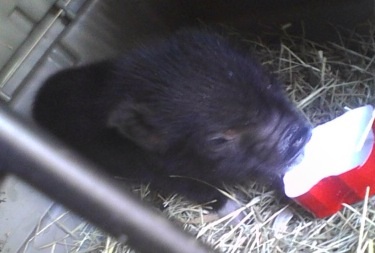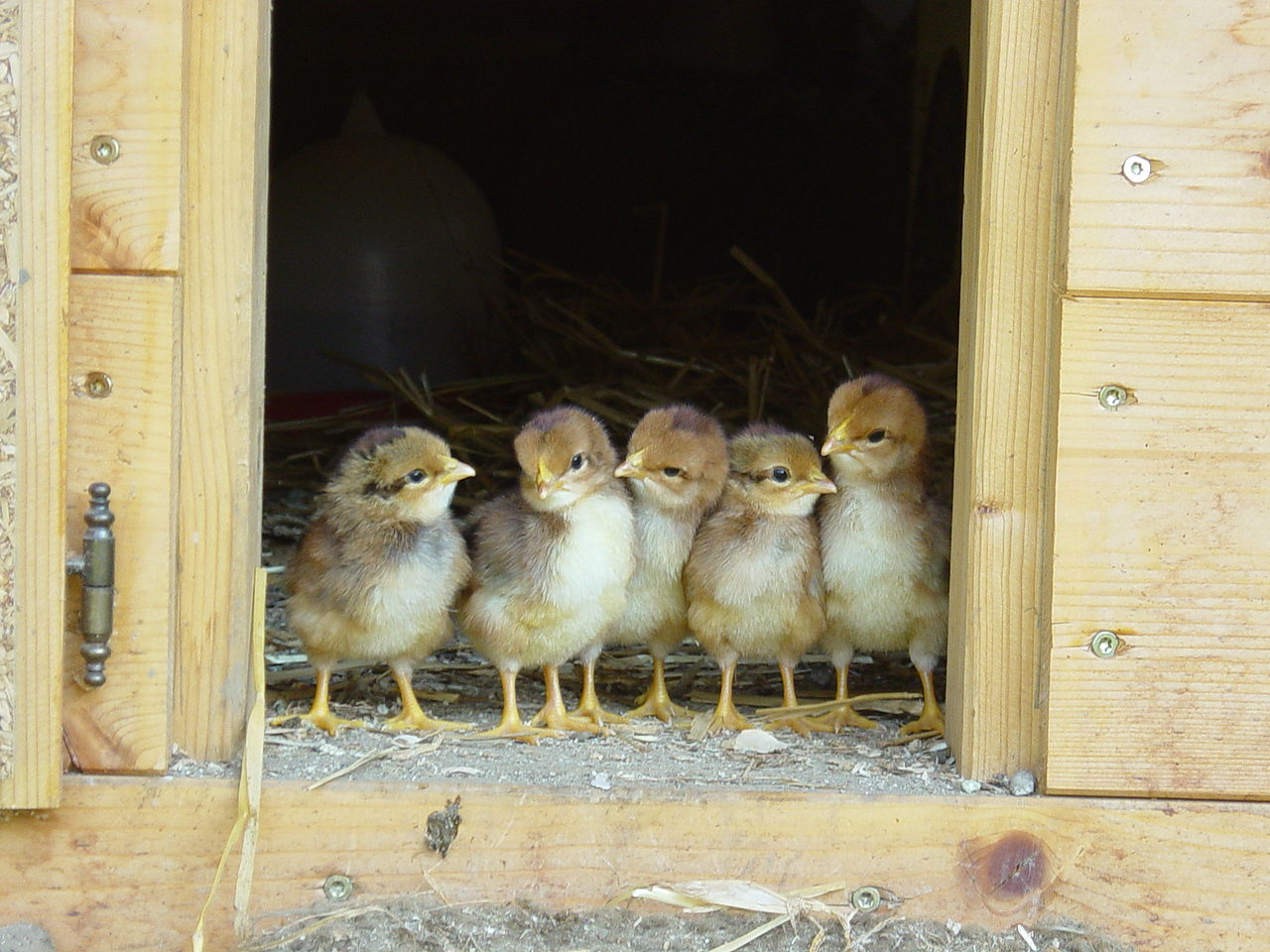Pot Bellied Pig

You need to have a well-defined space for your pig to stay in. A kitchen or a laundry room will do nicely. Leave the carrying crate in the space, so they feel comfortable. Next, you will need to set up a litter box. You will need a pan that is shallower than what a cat uses, so the pig can step in and out. Place the litter box away from the sleeping area and line it with wood chips or newspaper, not kitty litter as they will eat it. Prepare a sleeping area for your pig by setting up a card table and draping blankets over it.
As far as feeding your pig, there are several different things you can do. You may choose to feed them a healthy vegetarian diet twice daily. At each meal, you can feed fresh heads of romaine lettuce, fresh or frozen vegetables and pig pellets that you can buy online. Give them 24-hour access to an unlimited amount of timothy hay. There is much more to keeping your potbellied pig happy. To learn more, visit the Best Friends Animal Society website.
Tarantula

Begin by researching what type of tarantula you have, as many of them have different needs. You should fully understand the diet, temperature requirements and humidity levels that your specific tarantula needs. Find out what environment your tarantula is used to living in and try to recreate it for him. Buy a critter keeper for your pet. If you use an aquarium, seal it tightly. Be aware that he can climb glass with no problem. Place 2 inches of substrate at the bottom off the tank. Next, put in some organic potting soil. Place a small water bowl inside of the tank, about 1 inch deep.
Decorate the tank according to what the spider’s natural environment looked like. For example, tree dwelling species may need branches and things to climb on, while others may appreciate digging in plant leaves and such. Provide your tarantula with something to burrow in, such as a partially buried clay flowerpot. Time to feed your tarantula some insects. Crickets or roaches make the perfect dinner for them. Read Tarantula Guide to learn more.
Monkey

Do some research to learn more about the specific monkey you have as a pet. Squirrel monkeys, capuchins, spiders and macaques are all examples. If you have a monkey, be aware that this is a huge commitment. This is because they require almost as much attention as a child does. Make sure it is legal to own a monkey in your state before you bring one home. Locate an exotic animal veterinarian, as a regular one may not be prepared to help a monkey.
Buy or build a monkey cage, the bigger the better. Give them something to climb on in their cage such as branches, and ropes. Ever baby-proofed your home? Take this a few steps further for a monkey. Monkeys can turn doorknobs and open windows. They will tear down curtains and chew on furniture, for example. Plan on cleaning up a lot of urine and feces unless you will be diapering it, as monkeys go when and where they please.
Monkeys need plenty of fresh water that they can drink from clean water bottles. Using a baby bottle may be the best way. When it comes to food, stick to commercial monkey biscuits. You can also provide fresh fruit and steamed vegetables. When you give your monkey people food, don’t let it be junk food. You can feed monkeys hard boiled eggs, yogurt, rice, grains and nuts. Your monkey may also need a vitamin D supplement to make up for the lack of sun exposure. Make sure the monkey has plenty of toys and stimulation to keep her busy. Make sure you play with the monkey every day. Learn more about keeping a pet monkey with Primate Care.
Chickens

Chickens need shelter to protect them from hot and cold weather. The shelter should be insulated and well-ventilated. It is important to protect your chickens from potential predators such as raccoons and opossums. During the day, they should be kept in a fully-fenced enclosure or yard with protection from outside animals.
Use straw bedding, changing it frequently. Hens need a nest box, in which to lay their eggs. They need an elevated roost, where they can sleep at night. They need to have free access to grass and vegetation so that they can peck, scratch and forage. In addition to their traditional chicken feed, they will need fresh fruits, grains and vegetables. To learn more about how to take care of chickens, read the recommendations from The Humane Society of the United States.
Ball Python
Begin by creating a proper home for your ball python. You will need a 30-gallon aquarium with a tight fitting lid. Put down substrate such as newspaper or aspen chips. You can choose what you like, unless it is cedar chips, which are toxic to snakes. Place a heavy water bowl inside of the aquarium. You will also need a heating element, hides and humidity and heat gauges. One of the most important things you can do for a ball python is to keep it at the right temperature. You want to keep their environment around 80° to 85° during the day and about 75° at night.
Using a heating pad underneath the tank along with a ceramic heating element may do the trick. Use a thermometer inside of the tank to read the temperature. You need to have at least 2 hides on opposite ends of the tank to keep the snake happy. Buy a humidity gauge and place it inside of the tank. It should be kept around 60%. To make the gauge more humid, you may need to lightly spray the ball python’s tank with water.
Feed your snake a dead rodent. Begin by heating up the frozen mouse in a plastic bag that has been submerged in warm water. The mouse needs to be about the same size as the fattest part of the snake’s body. This should be done once a week, increasing the size of the food after your snake grows. Learn more about caring for a ball python from Reptiles Magazine.










